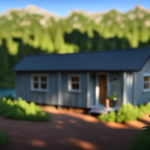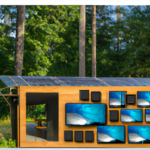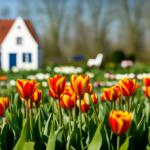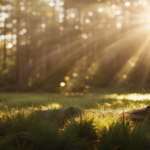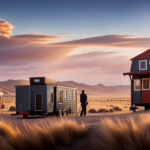Beginners Guides
Tiny House Where Are They Now
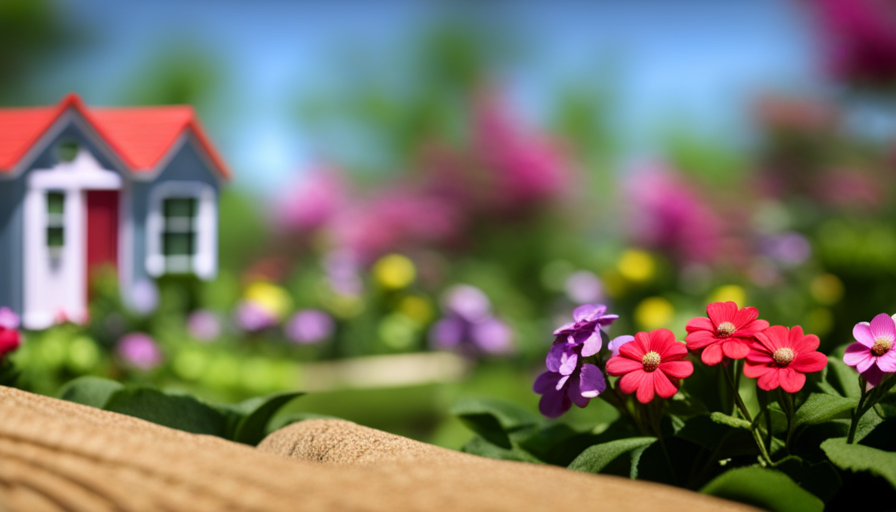
The phrase, ‘Good things come in small packages,’ perfectly encapsulates the tiny house movement within the housing sector. These small living spaces have intrigued numerous individuals, providing an avenue for a simpler way of life and an opportunity to embrace sustainability. However, the question arises – what’s the current status of these tiny homes? How have they progressed from their initial inception?
In this article, we will delve into the world of tiny houses and explore their current status. From the evolution of their designs to the emergence of tiny house communities and villages, we will uncover the various ways in which these petite abodes have made their mark on the housing landscape. Additionally, we will examine the unique locations where tiny houses have found their footing, as well as the challenges and regulations that come with this unconventional way of living.
Join me as we delve into the world of tiny houses, weighing the pros and cons of this lifestyle and uncovering future trends and innovations. Get ready to be amazed by the ingenuity and creativity that lies within these small but mighty homes.
Key Takeaways
- Tiny houses offer a minimalist lifestyle and promote sustainability.
- Tiny house designs incorporate sustainable materials and off-grid living features.
- Tiny house communities promote sustainable living and togetherness.
- Zoning restrictions and building codes pose challenges for tiny house dwellers.
Evolution of Tiny House Designs
Now, let’s take a look at how tiny house designs have evolved over the years and how you can make your own tiny space feel even more spacious and functional.
Sustainable materials have become a key focus in modern tiny house designs. Builders are now using eco-friendly materials like reclaimed wood, bamboo, and recycled metal to construct these small homes. Not only do these materials reduce the environmental impact, but they also create a unique and stylish aesthetic.
Another trend in tiny house designs is the incorporation of off-grid living features. Many tiny homes now include solar panels, rainwater collection systems, and composting toilets, allowing homeowners to live completely off the grid. These features not only promote self-sufficiency but also reduce utility costs.
Transitioning into the subsequent section about tiny house communities and villages, it’s important to consider how these sustainable and off-grid features can be utilized on a larger scale.
Tiny House Communities and Villages
Explore the thriving communities and villages where you can find a cozy haven that fits your lifestyle like a glove. Tiny house communities and villages have become a popular choice for those seeking sustainable living and community building. These communities promote a sense of togetherness and cooperation, with residents sharing resources and supporting each other’s eco-friendly initiatives.
From the quaint streets of Portland to the picturesque landscapes of Colorado, there are numerous locations across the country that have embraced the tiny house movement. These communities often offer amenities such as communal gardens, shared workspaces, and social events, fostering a strong sense of belonging and connection.
Living in a tiny house village allows individuals to minimize their ecological footprint while enjoying a tight-knit community of like-minded individuals.
Transitioning now to unique locations for tiny houses, let’s explore how people are finding innovative ways to incorporate small dwellings into their dream destinations.
Unique Locations for Tiny Houses
Immerse yourself in the enchanting landscapes of unique locations for tiny houses, where you can wake up to the sound of crashing waves and fall asleep under a sky full of twinkling stars. Off grid living and unconventional architecture are the defining features of these extraordinary places. From secluded forest retreats to coastal havens, these locations offer a chance to disconnect from the chaos of modern life and reconnect with nature. Imagine living in a tiny house perched on a cliff, overlooking the vast expanse of the ocean. Or perhaps nestled in a remote mountain valley, surrounded by towering trees and breathtaking views. These unique locations provide an unparalleled opportunity to embrace a simpler way of life.
| Location | Highlights |
|---|---|
| Coastal Haven | Stunning ocean views, beach access |
| Forest Retreat | Serene surroundings, abundant wildlife |
| Mountain Valley | Majestic peaks, hiking trails |
As we explore the challenges and regulations of tiny house living, it becomes evident that these unique locations offer not only beauty and tranquility, but also a set of unique obstacles to overcome.
Challenges and Regulations
Living in these unique locations for tiny houses can be like navigating through a labyrinth, as individuals face challenges and regulations that can feel like trying to find a hidden treasure.
Zoning restrictions play a significant role in determining where tiny houses can be placed. Many cities and towns have specific rules that limit the use of tiny houses, such as minimum square footage requirements or restrictions on parking and utilities.
Additionally, building codes can pose challenges for tiny house dwellers. These codes often require specific safety features, such as minimum ceiling heights or fire safety measures, which can be difficult to incorporate into a tiny space.
However, despite these obstacles, the tiny house movement continues to grow, as people find creative solutions to navigate through the maze of regulations and make their dreams of tiny house living a reality.
This transition into the subsequent section about ‘tiny house living: pros and cons’ highlights the determination and resilience of those who choose this lifestyle.
Tiny House Living: Pros and Cons
Imagine the freedom of living in a space perfectly designed for you, with all the cozy comforts and minimalistic charm you crave. Tiny house living offers just that and more.
Here are some pros and cons to consider:
-
Sustainability: Tiny houses are often built with eco-friendly materials and use less energy and resources than traditional homes, making them a more sustainable housing option.
-
Financial freedom: With a smaller mortgage or no mortgage at all, tiny house owners can enjoy greater financial freedom and flexibility.
-
Minimalistic lifestyle: Living in a tiny house forces you to declutter and live with only what you truly need, promoting a simpler and more intentional way of life.
-
Customization: Tiny houses can be customized to fit your personal style and needs, allowing you to create a space that is uniquely yours.
-
Mobility: Many tiny houses are built on wheels, giving you the ability to easily move and explore different locations.
Looking towards the future, trends and innovations in tiny house design and technology continue to emerge, offering even more possibilities for sustainable and financially freeing living.
Future Trends and Innovations
In discussing the future trends and innovations in tiny house living, it’s important to consider the technological advancements in tiny house construction. These advancements have made it possible to build smaller and more efficient homes with innovative materials and techniques.
Additionally, the integration of smart home features into tiny houses has become increasingly popular. This allows homeowners to control various aspects of their living space with ease.
Lastly, as the tiny house movement continues to gain traction, we can expect to see an expansion of the movement. More people are embracing the idea of living in smaller, more sustainable homes.
Technological Advancements in Tiny House Construction
Don’t you just love how technology has made building and designing tiny houses so much easier and more efficient?
With the advent of 3D printing technology, constructing tiny houses has become a seamless process. 3D printed tiny houses are revolutionizing the industry by offering cost-effective and time-efficient solutions. These houses are constructed layer by layer, using sustainable building materials such as recycled plastics and environmentally friendly concrete alternatives.
Not only does this method reduce waste and lower construction costs, but it also allows for greater design flexibility and customization. Additionally, the integration of smart home features has further enhanced the functionality and convenience of tiny houses. By incorporating technologies like voice-activated assistants, automated climate control, and energy-efficient appliances, these homes have become more sustainable and comfortable.
Transitioning into the next section about the integration of smart home features, it’s fascinating to see how technology continues to shape the future of tiny house living.
Integration of Smart Home Features
As we’ve seen, technological advancements have revolutionized the construction of tiny houses, making them more efficient and sustainable. But it doesn’t stop there. The integration of smart home features takes tiny house living to a whole new level.
Smart home automation allows for convenient control of various aspects of the house, such as lighting, temperature, security, and entertainment systems, all from a single device. This not only enhances the comfort and convenience of living in a tiny house but also contributes to energy efficiency.
Smart thermostats, for example, can learn your preferences and adjust the temperature accordingly, optimizing energy usage. Additionally, smart lighting systems can be programmed to turn off automatically when not in use, saving electricity. With these advancements, tiny houses are becoming more sustainable and eco-friendly than ever before.
Now, let’s explore how the tiny house movement is expanding beyond its current boundaries.
Expansion of the Tiny House Movement
You might be surprised to discover just how far the tiny house movement has spread, with enthusiasts finding creative ways to embrace minimalist living in various unconventional spaces. The expansion of the tiny house movement has brought about a range of exciting developments, particularly in terms of sustainability and financing options.
-
Sustainable living: Tiny houses are inherently eco-friendly due to their small size, which reduces energy consumption and promotes a minimalist lifestyle. Many tiny house dwellers also incorporate sustainable features such as solar panels, rainwater harvesting systems, and composting toilets, further reducing their environmental impact.
-
Financing options: As the movement has gained popularity, financing options for tiny houses have become more accessible. Traditional mortgage lenders are now offering specialized loans for tiny homes, and there are even crowdfunding platforms specifically tailored for tiny house financing. Additionally, some cities have started to relax zoning and building regulations to accommodate tiny houses, making it easier for individuals to obtain permits and loans.
-
Community support: The expansion of the tiny house movement has also led to the formation of supportive communities. Tiny house enthusiasts often band together to share resources, knowledge, and experiences. These communities provide a valuable support network for individuals who are interested in or already living in tiny houses, creating a sense of belonging and camaraderie.
Overall, the expansion of the tiny house movement has brought about exciting advancements in sustainability and financing options, making it a viable and attractive housing alternative for many individuals.
Frequently Asked Questions
How much does it cost to build a tiny house?
Building a tiny house can have varying costs depending on factors such as size, materials, and location. A cost breakdown typically includes expenses for construction materials, permits, utilities, and labor. Financing options for building a tiny house may involve personal savings, loans, or crowdfunding.
It’s important to research and compare prices for materials and services to ensure cost-effectiveness. Additionally, exploring financing options and working with a budget can help make the process more manageable.
What are some popular design styles for tiny houses?
Minimalist interiors and creative storage solutions are popular design styles for tiny houses. Imagine a tiny house with a loft bed that doubles as a bookshelf and a dining table that folds down from the wall. These clever solutions maximize space while maintaining a clean and uncluttered aesthetic.
Minimalist interiors often feature neutral color palettes, sleek furniture, and cleverly placed windows to create an open and airy feel. These design choices allow for a harmonious and functional living space in a tiny home.
Are there any specific building codes or regulations for tiny houses?
Building code requirements and zoning regulations for tiny houses can vary depending on the location. It’s important to research and understand the specific regulations in your area before building a tiny house. Generally, building codes will cover aspects such as safety, structural integrity, and electrical systems.
Zoning regulations may dictate where tiny houses can be located, the size limitations, and whether they can be used as permanent residences. Compliance with these regulations is crucial to avoid legal issues and ensure a safe and functional living space.
What are the main challenges people face when living in a tiny house?
Main challenges faced when living in a tiny house are primarily due to space limitations. With limited square footage, every inch of the house must be utilized efficiently. Storage becomes a major concern, forcing individuals to adopt minimalistic lifestyles.
Additionally, privacy can be compromised, as there are limited separate spaces within the house. According to a survey conducted by The Tiny Life, 68% of tiny house dwellers reported that lack of space was the biggest challenge they faced.
Are there any unique or unconventional locations where people have built tiny houses?
Unusual locations and creative designs have become a popular trend for tiny house enthusiasts. People have built tiny houses in unique places such as treehouses, converted shipping containers, and even on floating platforms. These unconventional locations offer a sense of adventure and allow individuals to think outside the box when it comes to designing their tiny homes.
From repurposed vehicles to underground dwellings, the possibilities are endless for those seeking a truly one-of-a-kind living experience.
Conclusion
In conclusion, the tiny house movement has come a long way since its inception. The evolution of tiny house designs has led to more innovative and efficient living spaces.
With the rise of tiny house communities and villages, people are finding a sense of community and support in this alternative lifestyle. It’s interesting to note that, according to a recent survey, 68% of tiny house dwellers reported having lower monthly expenses compared to traditional homeowners.
However, challenges and regulations still exist, making it important for aspiring tiny house owners to consider their options carefully. Nevertheless, with future trends and innovations, the tiny house movement continues to inspire individuals to live simpler, more sustainable lives.
Hi, I’m Emma. I’m the Editor in Chief of Tiny House 43, a blog all about tiny houses. While tree houses are often associated with childhood, they can be the perfect adult retreat. They offer a cozy space to relax and unwind, surrounded by nature. And since they’re typically built on stilts or raised platforms, they offer stunning views that traditional homes simply can’t match. If you’re looking for a unique and romantic getaway, a tree house tiny house might just be the perfect option.
Beginners Guides
How Do I Get Rid of Tiny White Bugs on My House Plants

- Health risks associated with tiny white bugs on house plants.
- Effective methods to prevent infestations of tiny white bugs on house plants
I am facing a small white insect issue with my indoor plants, and it is really frustrating me! These annoying bugs seem to be multiplying quickly, causing damage to my precious plants.
But fear not, my fellow plant enthusiasts, for I’ve done my research and found some effective solutions to eliminate these unwelcome guests.
In this article, I’ll share with you the knowledge and remedies I’ve discovered, so you too can reclaim your bug-free, thriving indoor garden.
Key Takeaways
- Aphids, mealybugs, and whiteflies are common types of tiny white bugs found on house plants.
- Lack of proper plant care, overwatering, and bringing infested plants indoors can lead to bug infestations.
- Homemade insecticides using water and dish soap or neem oil can suffocate and disrupt the feeding patterns of pests.
- Regular cleaning and inspection routines help detect and address pest issues early on.
Identifying the Tiny White Bugs on Your House Plants
I can easily spot the tiny white bugs on my house plants by carefully examining the leaves and stems. The most common species of these pests found on house plants are aphids, mealybugs, and whiteflies.
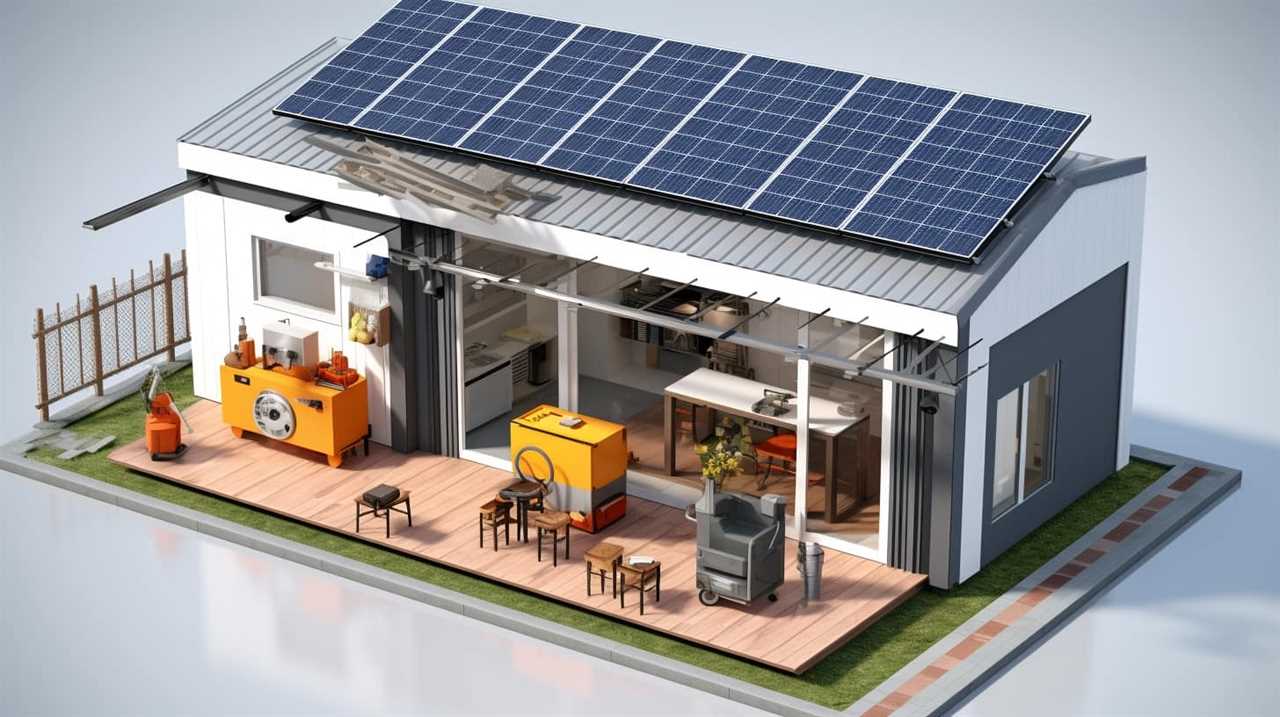
Aphids are small, pear-shaped insects that cluster on new leaves and buds.
Mealybugs are covered in a white, waxy substance and can be found on the undersides of leaves and in leaf axils.
Whiteflies, as the name suggests, are tiny white insects that fly around when disturbed.
An infestation of these tiny white bugs can cause significant damage to your house plants. Signs of infestation include yellowing leaves, stunted growth, distorted foliage, and a sticky residue called honeydew on the leaves. Furthermore, these pests can transmit plant diseases, weaken the plant’s immune system, and attract other pests.
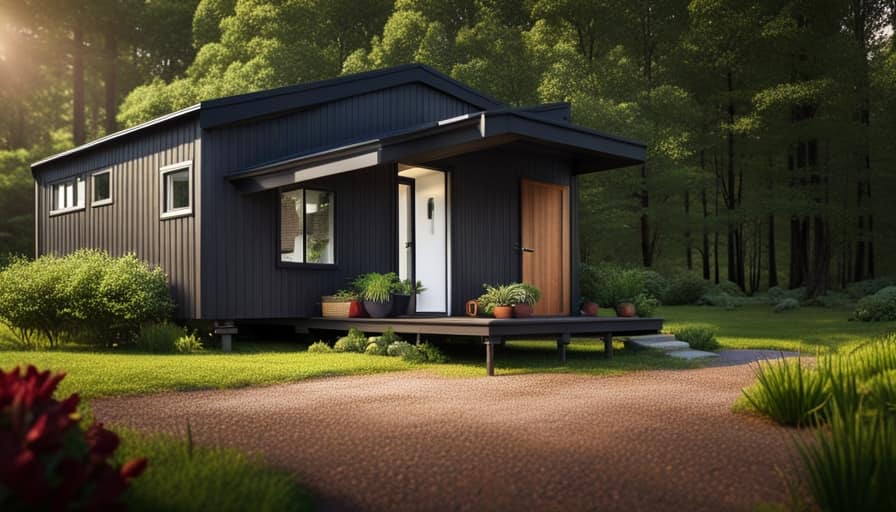
Understanding the causes of infestation is crucial in effectively getting rid of these tiny white bugs on your house plants.
Understanding the Causes of Infestation
Understanding the causes of infestation is essential in effectively eliminating these tiny white bugs on my house plants. Here are a few key factors to consider:
- Lack of proper plant care: Neglecting to provide adequate water, sunlight, and nutrients can weaken plants, making them more susceptible to bug infestations.
- Overwatering: Excessive moisture can create a favorable environment for pests like aphids and mealybugs.
- Bringing infested plants indoors: Introducing plants from outside without proper inspection can bring unwanted bugs into your home.
Recognizing the signs of bug damage is crucial for preventing infestation. Look out for yellowing, wilting leaves, sticky residue on leaves and stems, and tiny white bugs crawling on the plant’s surface.
Now that we understand the causes of infestation, let’s explore natural remedies to eliminate these pesky bugs.
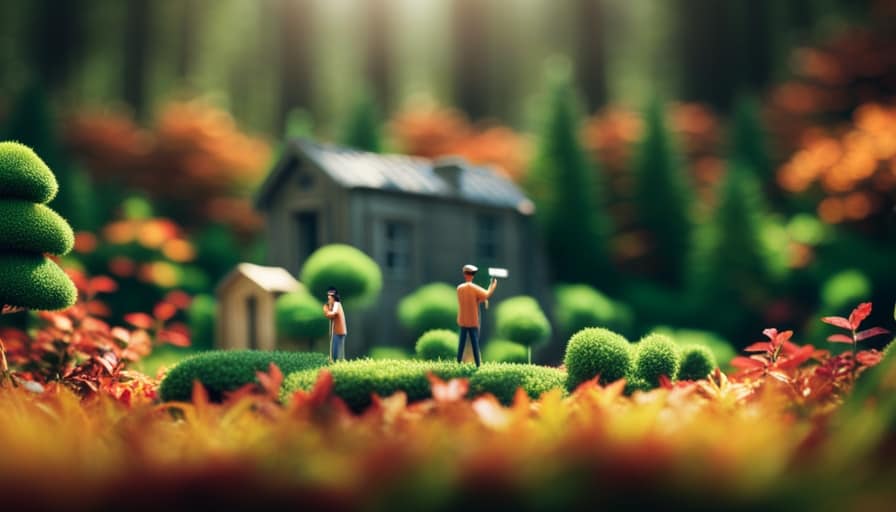
Natural Remedies to Eliminate the Bugs
To effectively get rid of these tiny white bugs on my house plants, I’ll need to rely on natural remedies that can eliminate them without harming the plants.
One effective option is to create homemade insecticides using ingredients readily available in your kitchen. You can mix a solution of water and dish soap, or water and neem oil, and spray it directly on the affected plants. These solutions work by suffocating the pests and disrupting their feeding patterns.
Another natural approach is to introduce insect-repelling plants into your garden. Plants like lavender, mint, and marigold emit fragrances that repel insects, keeping them away from your precious plants.
Chemical Solutions for a Lasting Bug-Free Environment
One effective chemical solution for achieving a bug-free environment is using a professional-grade insecticide spray. These sprays are specifically formulated to target and eliminate pests, including tiny white bugs on house plants. When using a professional-grade insecticide spray, it’s important to follow the instructions provided by the manufacturer to ensure safe and effective use.
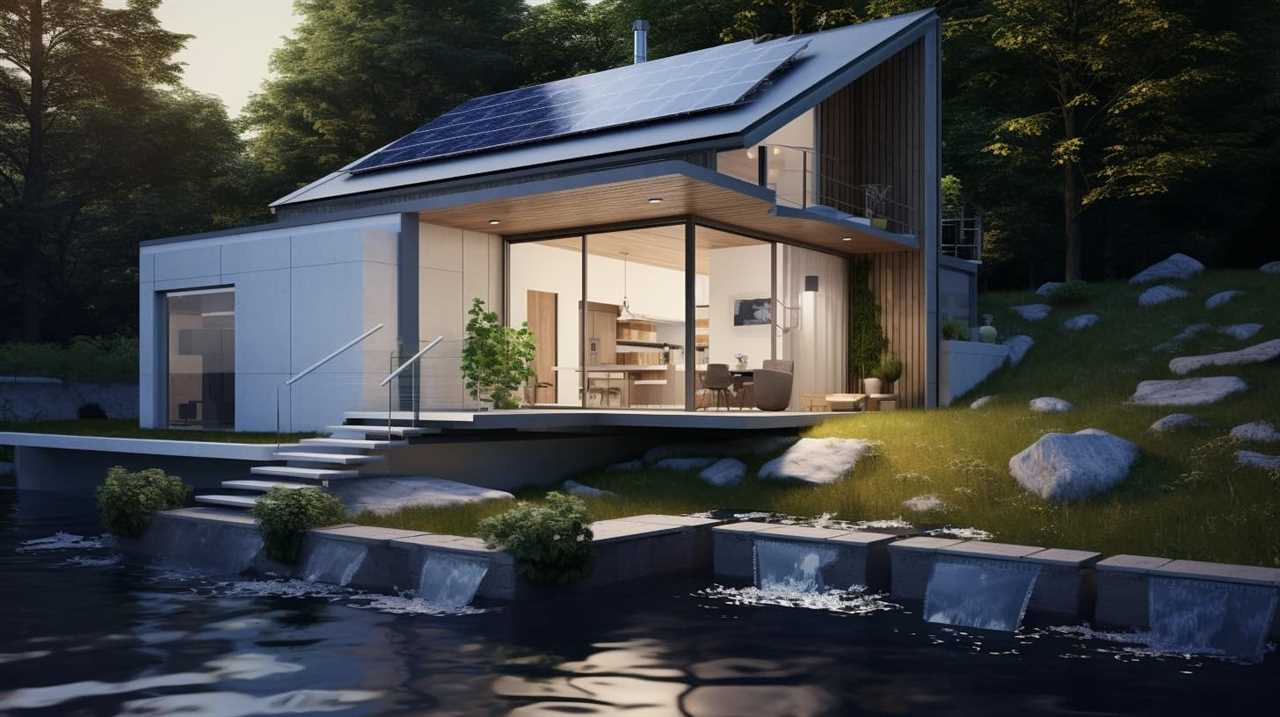
Additionally, consider these non-toxic alternatives to chemical solutions for pest control:
-
Neem oil: Derived from the neem tree, neem oil is a natural insecticide that can be effective against a wide range of pests. It works by disrupting the insect’s life cycle and repelling them from plants.
-
Insecticidal soap: Made from potassium salts of fatty acids, insecticidal soap works by suffocating pests on contact. It’s safe to use on most plants and can be an effective solution against white bugs.
-
Diatomaceous earth: This powdery substance is made from fossilized remains of diatoms and acts as a desiccant, drying out and killing insects.
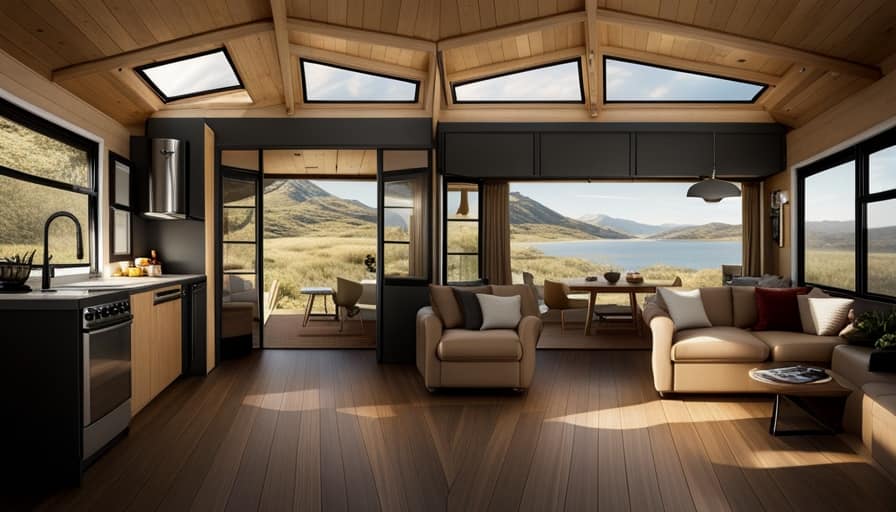
When using any chemical solution or non-toxic alternative, it’s essential to monitor the plants closely and repeat the treatment as necessary to maintain a bug-free environment. Professional pest control services can also provide expert guidance and assistance in achieving long-lasting results.
Preventing Future Infestations and Maintaining Healthy House Plants
To effectively prevent future infestations and maintain healthy house plants, I will implement a regular cleaning and inspection routine. This will help ensure that any signs of pests or diseases are detected early on and addressed promptly. Regularly cleaning the leaves and stems of my plants with a mild soap and water solution will help remove any dust or debris that can attract pests. Additionally, I will inspect the plants for any signs of infestation, such as white bugs or sticky residue on the leaves. To further enhance plant hygiene, I will also consider using beneficial insects, such as ladybugs or lacewings, which feed on common plant pests like aphids. By incorporating these practices into my routine, I can maintain healthy house plants and prevent future infestations.
| Regular Cleaning | Inspection Routine | Using Beneficial Insects |
| Remove dust and debris | Check for signs of infestation | Introduce ladybugs or lacewings to control pests |
| Promotes plant hygiene | Detect and address issues early | Natural pest control method |
| Prevents pest attraction | Maintain healthy house plants | Encourages ecosystem balance |
Frequently Asked Questions
Can These Tiny White Bugs Harm Humans?
Yes, tiny white bugs on house plants can harm humans. They can cause skin irritations and allergic reactions. It’s important to take steps to prevent infestations, such as regularly inspecting and cleaning your plants.
How Long Does It Take for Natural Remedies to Eliminate the Bugs Completely?
To completely eliminate the tiny white bugs using natural remedies, it typically takes a few weeks of consistent application. However, the effectiveness of these remedies can vary. It’s important to avoid common mistakes like under-applying or using incorrect remedies.
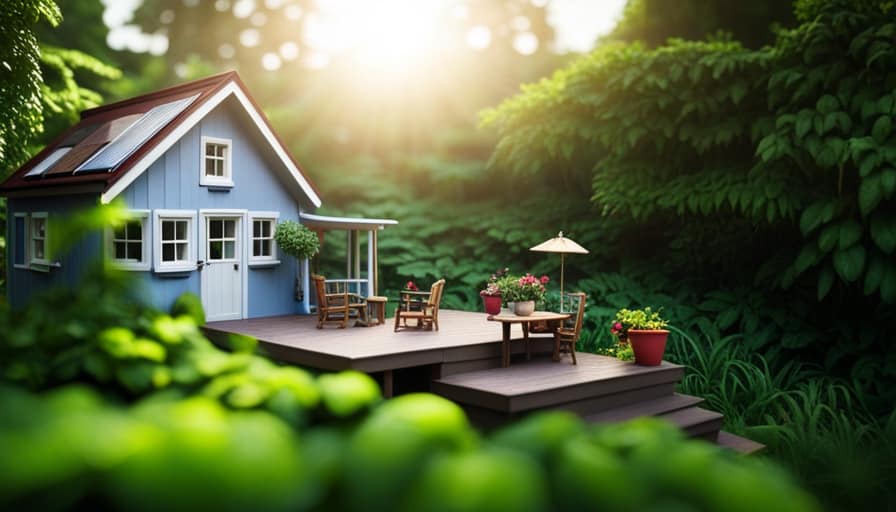
Are There Any Specific Types of House Plants That Are More Prone to Infestations?
Certain house plants, like lavender and marigolds, have natural repellent properties that can help prevent infestations. It’s important to choose plants that are known to repel bugs and to regularly inspect and clean your plants to avoid any potential infestations.
Can These Bugs Spread From One House Plant to Another?
Oh, the joy of tiny white bugs on house plants! Yes, these pests can spread from one plant to another. To control them, use insecticides and watch out for signs of infestation like sticky residue or wilting leaves.
How Often Should I Check My House Plants for Signs of Infestation?
I check my house plants for signs of infestation regularly to ensure their health. Common signs include tiny white bugs and yellowing leaves. Preventative measures like proper watering and cleaning can help keep plants bug-free.
Conclusion
In conclusion, taking care of our house plants goes beyond watering and sunlight. Identifying and eliminating tiny white bugs is a crucial part of maintaining a healthy environment for our plants.
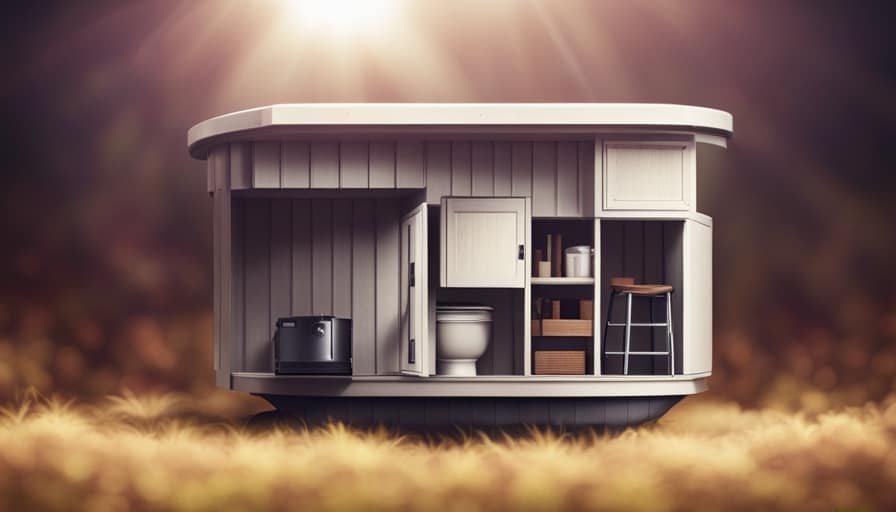
By understanding the causes of infestation and using natural or chemical remedies, we can ensure a bug-free environment. Remember, prevention is key, so regularly inspect your plants and take necessary measures to keep them thriving.
Happy gardening!
I’m Theodore, and I love tiny houses. In fact, I’m the author of Tiny House 43, a book about tiny houses that are also tree houses. I think they’re magical places where imaginations can run wild and adventures are just waiting to happen.
While tree houses are often associated with childhood, they can be the perfect adult retreat. They offer a cozy space to relax and unwind, surrounded by nature. And since they’re typically built on stilts or raised platforms, they offer stunning views that traditional homes simply can’t match.
If you’re looking for a unique and romantic getaway, a tree house tiny house might just be the perfect option.
Beginners Guides
How Do I Get Rid of Tiny Moths in My House

I have experienced the frustration of dealing with tiny moths flying around my food in the kitchen. But do not worry, I have a solution for you.
In this article, I’ll show you how to banish those pesky moths from your house for good. We’ll dive into identifying different moth species, understanding what attracts them, and simple prevention techniques you can implement.
Plus, I’ll share some natural remedies and professional options as a last resort. Say goodbye to those unwanted guests!
Key Takeaways
- Identifying the specific moth species is crucial for implementing targeted control measures.
- Moths are attracted to food sources, fabrics, and organic materials, so it’s important to store food in airtight containers and keep the house clean.
- Moths prefer dark, undisturbed areas to lay their eggs, so sealing cracks and openings in walls, windows, and doors can help prevent infestation.
- If natural remedies and DIY methods fail, it is advisable to seek professional pest control services for thorough inspection and tailored treatment plans.
Identifying the Culprits: What Type of Moth Is Invading Your Home
I can’t figure out what kind of moth is infesting my home. It’s frustrating not knowing the exact species, as different moths have different behaviors and habits. Identifying the culprits is crucial in order to effectively address the problem.
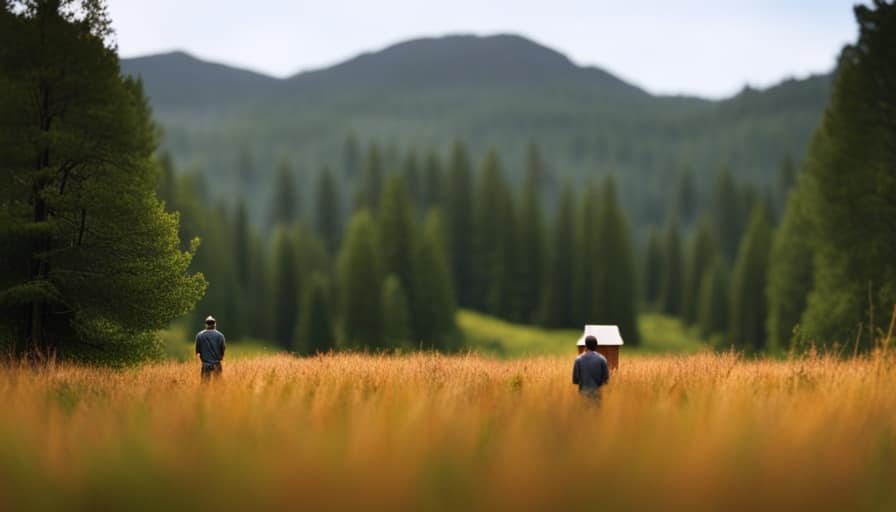
There are several common moth species that are known to invade homes, such as the Indian mealmoth, clothes moth, and pantry moth. Each species has distinct characteristics that can help with identification. Understanding their behavior is also important as it can give insights into their lifecycle and potential sources of infestation.
Moths are attracted to food sources, fabrics, and other organic materials. They can lay eggs in stored grains, textiles, or even pet food. By understanding the specific species and their behavior, it becomes easier to implement targeted control measures and prevent further infestations.
Understanding the Infestation: Why Are Moths Attracted to Your House
To effectively address the infestation, it’s essential to understand why moths are attracted to your house. Here are four reasons why moths may be flocking to your home:
-
Food sources: Moths are attracted to food, especially grains, cereals, and dried fruits. They can easily find their way into your pantry and feast on these items.
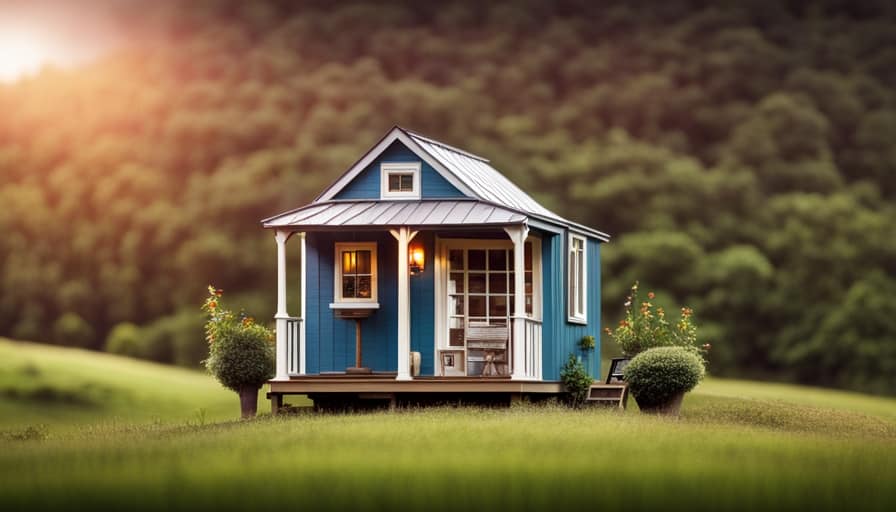
-
Moisture and humidity: Moths thrive in damp environments, making your house an ideal breeding ground if there are areas with high humidity or water leaks.
-
Suitable habitat: Moths are drawn to dark, undisturbed areas where they can lay their eggs undisturbed. This includes closets, attics, and basements.
-
Outdoor attraction: Moths can be attracted to your house from the outside, especially if you have outdoor lights that are left on at night.
Understanding moth behavior and their attraction to your house is crucial in preventing further infestation. By addressing these factors, you can take steps to keep moths at bay and protect your home.

Here are some moth prevention tips:
- Store food in airtight containers.
- Keep your house clean and free of crumbs or spills.
- Fix any leaks or moisture issues promptly.
- Use moth repellents or traps in vulnerable areas.
Prevention Is Key: Simple Steps to Keep Moths From Entering Your Home
Prevention is essential, so I’ll share some simple steps to keep moths from entering your home. By taking a proactive approach, you can create an inhospitable environment for moths and minimize the risk of infestations. One effective method is to use moth repellent products, such as sachets or sprays, in areas where moths are commonly found. These repellents contain chemicals that deter moths from entering your home. Additionally, it is crucial to seal any cracks or openings in your walls, windows, and doors. Moths can easily slip through these tiny gaps, so using caulk or weatherstripping can help keep them out. Regularly vacuuming and cleaning your home can also eliminate moth eggs or larvae that may be hiding in carpets or corners. By implementing these preventive measures, you can ensure a moth-free home environment.
| Steps to Keep Moths Away | |
|---|---|
| Use moth repellent products | Seal cracks and openings |
| Regularly vacuum and clean |
Natural Remedies: Non-Toxic Solutions to Get Rid of Moths
One effective way to get rid of moths naturally is by using a combination of vinegar and water to create a non-toxic moth spray. Here are some natural remedies you can try:
-
Vinegar and water spray: Mix equal parts vinegar and water in a spray bottle. Spray this solution on areas where moths are present, such as closets, drawers, and pantry shelves. The strong odor of vinegar repels moths and prevents them from laying eggs.
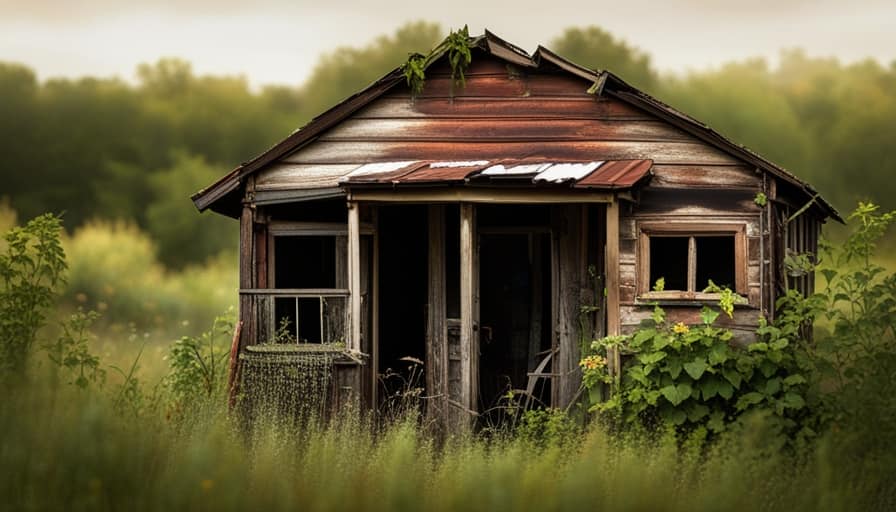
-
Cedar chips: Moths dislike the smell of cedar, so placing cedar chips in your closets and drawers can help deter them. You can also use cedar oil or cedar sachets for the same effect.
-
Homemade traps: Create simple moth traps by placing a mixture of vinegar, sugar, and dish soap in a bowl. The sweet scent attracts moths, and the dish soap traps them when they try to land on the mixture.
-
Lavender sachets: Moths are repelled by the fragrance of lavender. Place dried lavender in small sachets and tuck them in your clothing drawers or hang them in your closets.
These natural repellents and homemade traps can help you get rid of moths without using toxic chemicals. However, if these methods fail to eliminate the infestation, it may be time to consider professional pest control options.
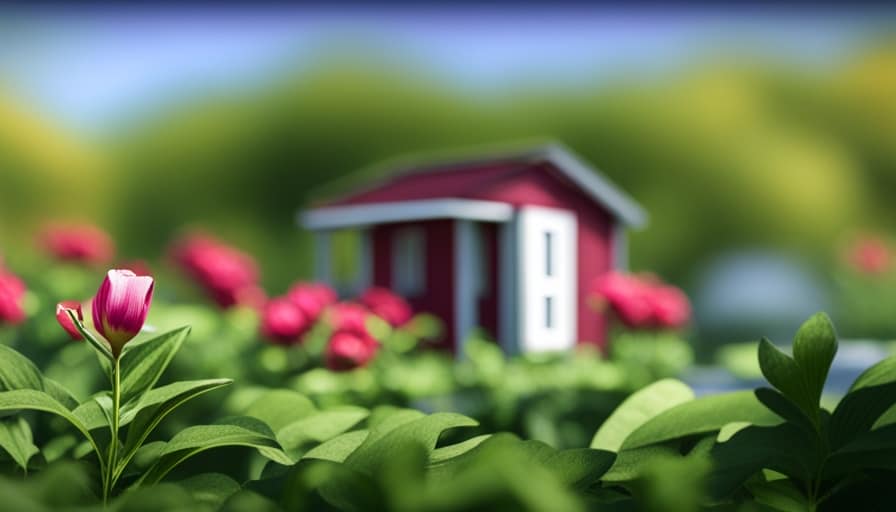
Last Resort: When All Else Fails, Professional Pest Control Options
If I’ve exhausted all other options, I’ll contact a professional pest control service to eliminate the moth infestation in my house. While natural remedies and DIY methods can be effective for small infestations, sometimes the problem persists or worsens despite our best efforts.
This is when it’s crucial to call in the experts. Professional pest control services have the knowledge, experience, and resources to effectively eradicate moth infestations. They’ll conduct a thorough inspection of your home to identify the source of the infestation and develop a tailored treatment plan.
The benefits of hiring professionals include their expertise in identifying different moth species, their access to specialized equipment and pesticides, and their ability to ensure the complete eradication of the infestation.
When all else fails, it’s best to rely on the expertise of professional pest control services to rid your home of those persistent moths.

Frequently Asked Questions
Can Moths Cause Any Damage to My House or Belongings?
Moths can cause damage to fabrics, carpets, and stored food. It’s important to address a moth infestation promptly. Using natural moth repellents, like lavender or cedar, can help deter them from your house and protect your belongings.
Are All Types of Moths Attracted to Homes, or Are There Specific Species That Are More Common?
In the world of moths, certain species have a penchant for our cozy homes. Understanding the types commonly found indoors can help us prevent the dreaded infestations from taking hold in the first place.
How Long Does It Usually Take to Get Rid of a Moth Infestation Using Natural Remedies?
Using natural remedies to get rid of a moth infestation can be effective, but the time it takes varies depending on the severity. Common signs of an infestation include sightings of adult moths and larvae, as well as damaged fabrics or food products.
Can Moths Carry Diseases or Pose a Health Risk to Humans?
Moths can transmit diseases to humans, so it’s important to take precautions. Individuals with allergies or asthma may experience respiratory issues due to moth infestations in homes.

Are There Any Specific Plants or Herbs That Repel Moths and Can Be Used as Natural Remedies?
Using natural moth repellents, such as specific plants and herbs, offers several benefits over chemical alternatives. Creating a moth repelling garden with lavender, rosemary, and mint can effectively deter moths from your house.
Conclusion
In conclusion, it’s essential to address the presence of these minuscule pests in your home promptly. By identifying the specific type of moth invading your space and understanding their attraction, you can take preventive measures to keep them at bay.
Utilizing natural remedies and seeking professional pest control services as a last resort will ensure a moth-free environment without compromising your household’s well-being.
Stay vigilant and employ these effective methods to bid farewell to these unwelcome visitors.
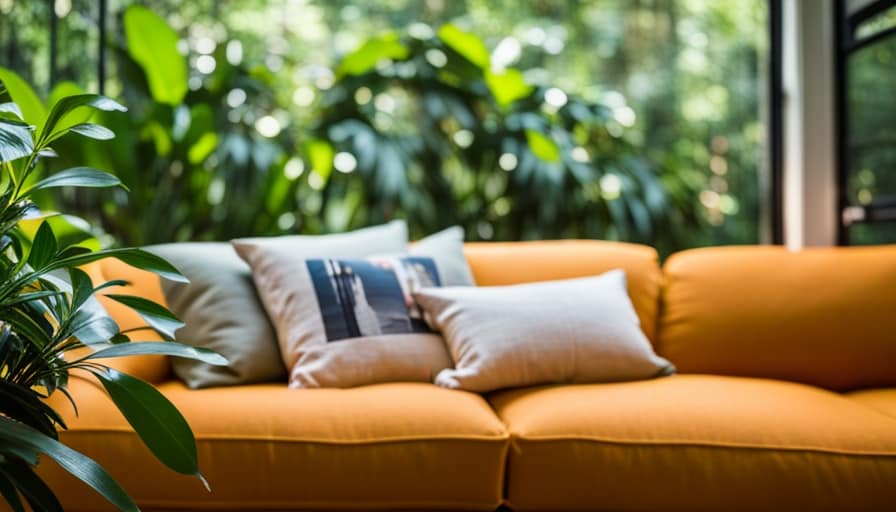
I’m Theodore, and I love tiny houses. In fact, I’m the author of Tiny House 43, a book about tiny houses that are also tree houses. I think they’re magical places where imaginations can run wild and adventures are just waiting to happen.
While tree houses are often associated with childhood, they can be the perfect adult retreat. They offer a cozy space to relax and unwind, surrounded by nature. And since they’re typically built on stilts or raised platforms, they offer stunning views that traditional homes simply can’t match.
If you’re looking for a unique and romantic getaway, a tree house tiny house might just be the perfect option.
Beginners Guides
How Difficult Is It to Build a Tiny House in Colorado Springs

I understand your concerns about building a tiny house in Colorado Springs. However, I can assure you that with the proper knowledge and guidance, it is completely achievable.
In this article, I’ll walk you through the zoning regulations, permitting process, finding suitable land, and navigating building codes. We’ll also discuss securing financing, budgeting, and dealing with utilities.
So, if you’re ready to embark on this rewarding journey, let’s dive in and make your tiny house dreams a reality.
Key Takeaways
- Zoning regulations and building permits are required for constructing a tiny house in Colorado Springs.
- Finding suitable land that complies with zoning regulations is important for placing a tiny house.
- Familiarizing oneself with local building codes and regulations, and following safety guidelines is necessary.
- Researching various financing options and presenting a detailed budget can increase the chances of securing financing for building a tiny house.
Zoning Regulations and Permitting Process
I’ll need to research the zoning regulations and permitting process before starting to build my tiny house in Colorado Springs. Understanding these regulations is crucial as they dictate where and how I can construct my tiny house.
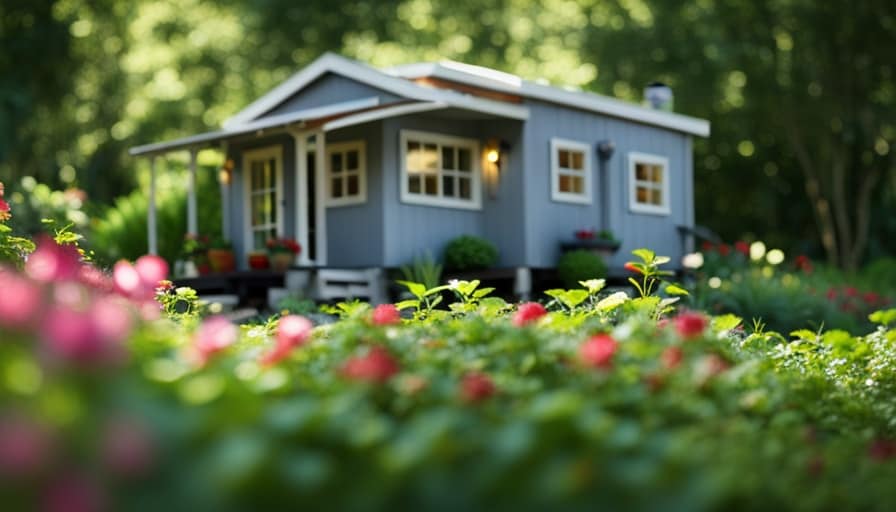
One key aspect to consider is the impact of tiny houses on property values. While some argue that they can decrease property values, others believe that they can actually increase them by adding diversity and uniqueness to the community.
Additionally, one of the challenges I may face is finding legal parking for my tiny house in urban areas. Many cities have restrictions on where tiny houses can be parked, making it essential to find suitable parking options that comply with local regulations.
With these factors in mind, I can now move on to finding suitable land for my tiny house.
Finding Suitable Land for Your Tiny House
After researching the zoning regulations and permitting process, it’s now time to start finding suitable land for my tiny house in Colorado Springs.
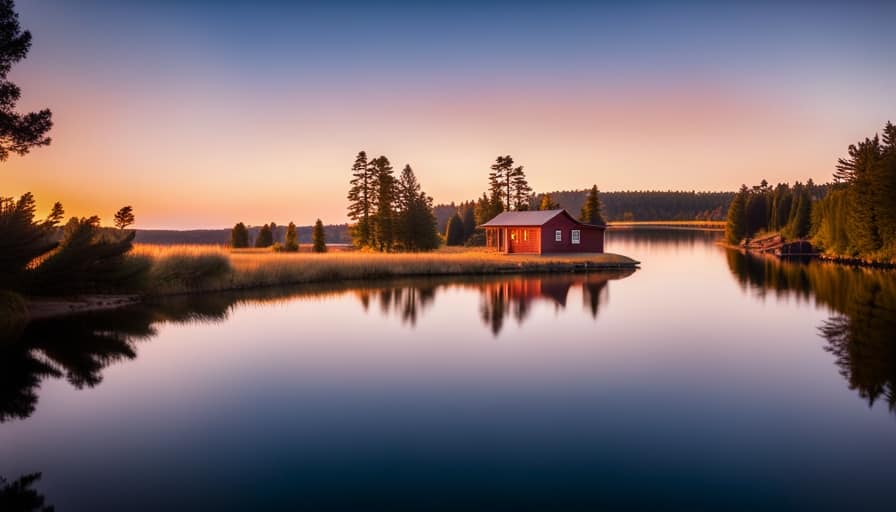
When it comes to finding land for a tiny house, there are a few important factors to consider. One of the major challenges is land availability constraints. Due to the increasing popularity of tiny houses, finding land that allows for their construction can be difficult. It’s important to do thorough research and explore different options, such as contacting local real estate agents or checking online platforms that specialize in tiny house-friendly land.
Additionally, environmental impact considerations are crucial. It’s important to choose a location that minimizes the impact on the surrounding environment and aligns with sustainable practices.
Taking these factors into account will ensure that I find a suitable piece of land for my tiny house in Colorado Springs.
Navigating Building Codes and Inspections
When it comes to navigating building codes and inspections for my tiny house in Colorado Springs, I’ll need to familiarize myself with the local regulations and ensure compliance throughout the construction process. Understanding local regulations is crucial to avoid any legal issues and ensure that my tiny house meets all the necessary requirements.
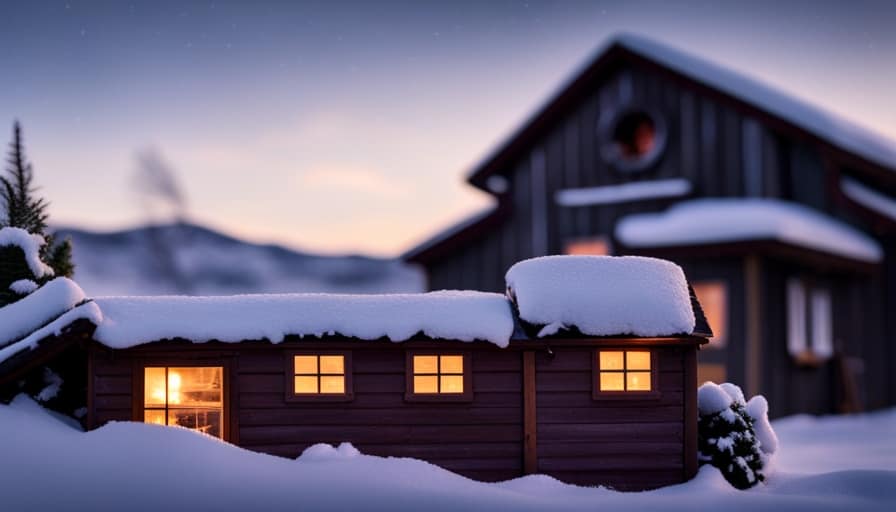
This includes obtaining proper permits, adhering to zoning laws, and following safety guidelines. To ensure a smooth process, I may consider hiring a professional builder who’s well-versed in local building codes and has experience with tiny house construction. Their expertise and knowledge will help me navigate the intricacies of the regulations and ensure that my tiny house is built according to the highest standards.
By understanding the local regulations and working with a professional builder, I can confidently proceed with my project while complying with all necessary codes and inspections.
With the building codes and inspections in mind, the next step is to secure financing and budget for my tiny house project.
Securing Financing and Budgeting for Your Project
To successfully secure financing and budget for my tiny house project in Colorado Springs, I frequently need to research various lenders and explore different funding options. Securing loans for a tiny house can be challenging, as it’s a unique type of project and not all lenders may be familiar with it. However, there are lenders who specialize in providing loans specifically for tiny houses.
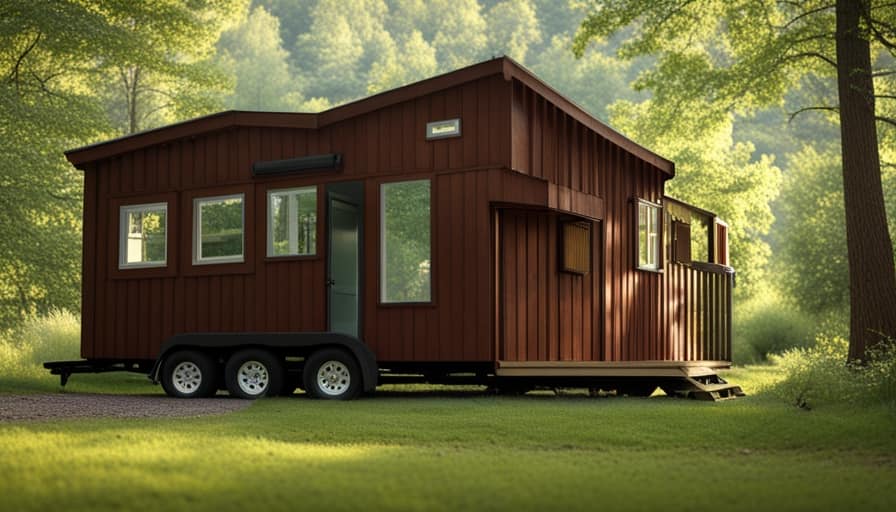
It’s important to gather all the necessary documents and information required by the lenders, such as the cost estimation of the project, including materials, labor, and any additional expenses. By presenting a thorough and well-prepared budget, it increases the chances of securing financing for the project.
Once the financing is secured, it becomes easier to move forward with the next steps of the project, such as dealing with utilities and exploring off-grid options.
Dealing With Utilities and Off-Grid Options
I can explore both traditional utility options and off-grid alternatives when dealing with electricity, water, and sewage in my tiny house in Colorado Springs.
When it comes to off-grid power, there are several options available. Solar panels are a popular choice, harnessing the energy of the sun to generate electricity. Wind turbines can also be used to generate power, particularly in areas with consistent wind patterns. Additionally, hydroelectric power can be harnessed if there’s a suitable water source nearby.
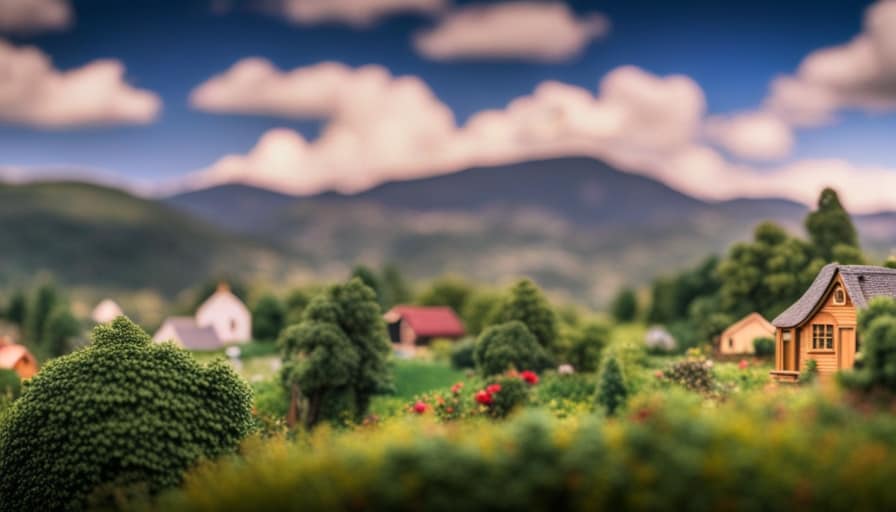
As for water sources, rainwater collection systems can be installed to capture and store rainwater for household use. Digging a well is another option, although it may require permits and additional expenses.
Lastly, composting toilets can be used to manage sewage in an off-grid tiny house, eliminating the need for traditional plumbing systems.
Frequently Asked Questions
What Are the Advantages of Building a Tiny House in Colorado Springs Compared to Other Cities in Colorado?
Building a tiny house in Colorado Springs has many advantages compared to other cities in Colorado. The city has a thriving tiny house community, supportive regulations, and an abundance of natural beauty to enjoy.
Are There Any Specific Design Requirements for Tiny Houses in Colorado Springs?
There are specific design requirements for tiny houses in Colorado Springs, including building regulations that must be followed. It is important to be knowledgeable about these requirements to ensure a successful and compliant build.

How Long Does the Zoning and Permitting Process Usually Take in Colorado Springs?
The zoning and permitting process in Colorado Springs can be a challenge. It takes time to navigate through the requirements and obtain the necessary approvals. However, with proper guidance and patience, it is possible to build a tiny house in Colorado Springs.
Are There Any Restrictions on Living in a Tiny House on Wheels in Colorado Springs?
Living in a tiny house on wheels in Colorado Springs comes with restrictions. Tiny house parking options are limited, and building codes for tiny houses must be followed. It can be challenging, but not impossible.
Can I Rent Out My Tiny House as an Airbnb in Colorado Springs?
Renting out a tiny house as an Airbnb in Colorado Springs is possible, but there are regulations to follow. It’s important to familiarize yourself with local zoning laws and obtain any necessary permits before listing your tiny house as a rental property.
Conclusion
Building a tiny house in Colorado Springs may be challenging due to zoning regulations, finding suitable land, navigating building codes, securing financing, and dealing with utilities.
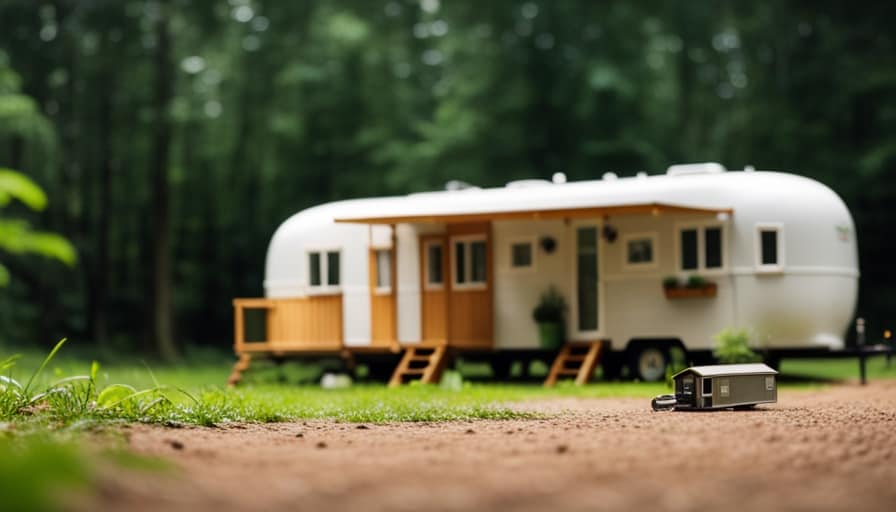
However, with determination and thorough research, it’s possible to overcome these obstacles.
For example, Sarah, a Colorado Springs resident, successfully built her own off-grid tiny house by carefully selecting land outside city limits, obtaining the necessary permits, and utilizing solar power.
Her experience demonstrates that with proper planning and knowledge, building a tiny house in Colorado Springs can be a rewarding and sustainable endeavor.
I’m Theodore, and I love tiny houses. In fact, I’m the author of Tiny House 43, a book about tiny houses that are also tree houses. I think they’re magical places where imaginations can run wild and adventures are just waiting to happen.
While tree houses are often associated with childhood, they can be the perfect adult retreat. They offer a cozy space to relax and unwind, surrounded by nature. And since they’re typically built on stilts or raised platforms, they offer stunning views that traditional homes simply can’t match.
If you’re looking for a unique and romantic getaway, a tree house tiny house might just be the perfect option.
-

 Beginners Guides2 weeks ago
Beginners Guides2 weeks agoHow To Buy A Tesla Tiny House
-

 Energy Efficiency2 months ago
Energy Efficiency2 months agoBest Tiny Homes For Cold Climates
-

 Beginners Guides1 week ago
Beginners Guides1 week agoTiny House Nation Where Are They Now Stephanie
-

 Tiny House Resources (e.g., legalities, cost, insurance, FAQs)2 months ago
Tiny House Resources (e.g., legalities, cost, insurance, FAQs)2 months agoDo Tiny Homes Need Planning Permission?
-

 Beginners Guides3 weeks ago
Beginners Guides3 weeks agoFrom The Show Tiny House Nation How Many Keep Their Tiny House?
-

 Beginners Guides2 months ago
Beginners Guides2 months agoUsing a Climbing Net For Treehouse Construction
-

 Beginners Guides2 months ago
Beginners Guides2 months agoHow to Build a Treehouse Without Drilling Into the Tree
-

 Beginners Guides3 weeks ago
Beginners Guides3 weeks agoTiny House Nation Who Pays For The Houses





